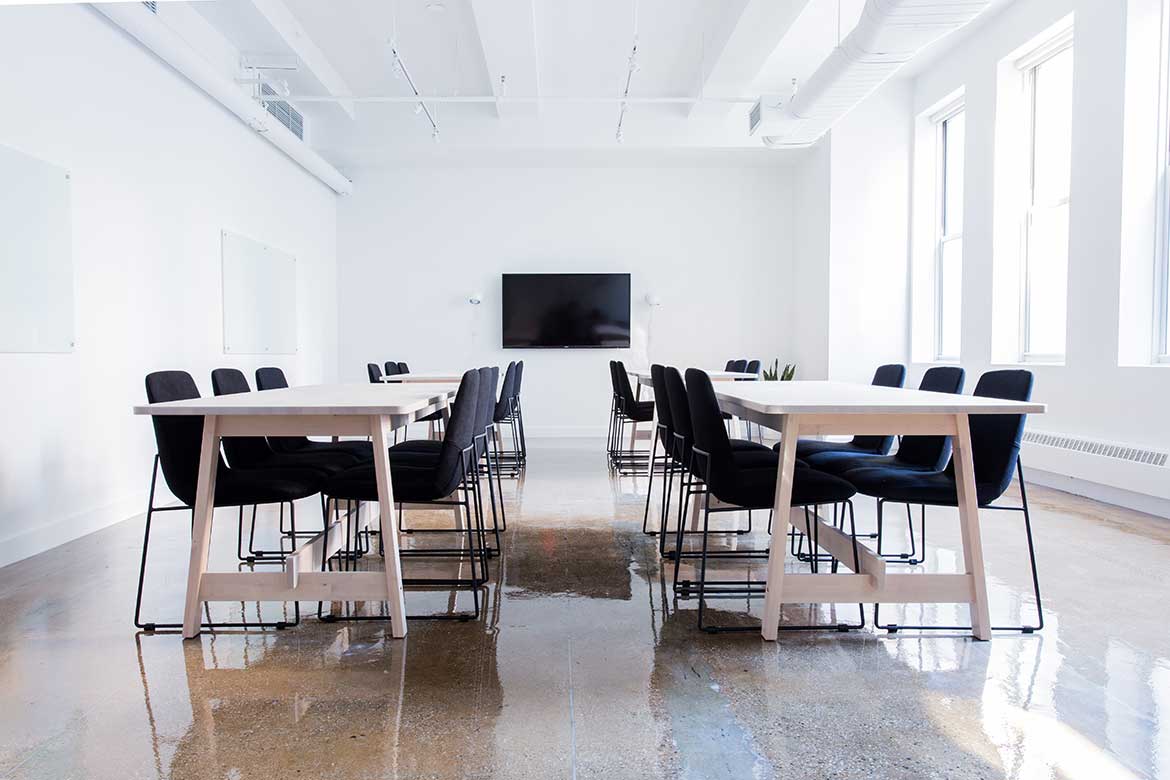12th July, 2022
Who Is Responsible For Health And Safety In The Workplace?
Health and safety at work covers a wide range of topics and regulations. But who needs to put all of these rules and requirements in place? And who's to blame if things go wrong? Who is responsible for health and safety in the workplace?

Employers are responsible for health and safety in the workplace. That's not to say they are alone in having health and safety responsibilities, but they do have the overall responsibility.
In smaller businesses, this will be the business owner. In a bigger company, the person in charge is usually known as:
- The Managing Director, or
- Chief Executive Officer (CEO)
The main health and safety responsibilities at work fall on business owners and employers. All business owners are employers (unless you have no staff).
Even if you don't have any staff, you still have health and safety responsibilities - you must protect anyone who might be affected by your work.
Your health and safety responsibility is not something you can assign to someone else. If you're a business owner or employer, you are responsible for health and safety.
Although, you are not the only one with health and safety responsibilities.
Everyone has some responsibility for health and safety at work. And you can assign health and safety duties to other competent people to help you.
Employer Responsibilities
- Legal responsibilities as an employer
- Responsible for health and safety management
Employers have the ultimate health and safety responsibility. It's your business, and you run it. You employ workers, plan the work, set the budgets, and control the resources. So you're accountable for the safety of the people under your control. After all, they are working for you.
If you decide not to provide PPE or set an unrealistic deadline, workers have little control over that. And it could put them in danger. That's why it's your responsibility to keep the people involved with your business activities safe.
These people could be your employees, agency workers, contractors, clients, and even the public.
Under health and safety law employers are responsible for managing health and safety risks in their businesses. [...] It is an employer's duty to protect the health, safety and welfare of their employees and other people who might be affected by their work activities. Employers must do whatever is reasonably practicable to achieve this.
You have the final word on health and safety, and the main responsibility belongs to you.
That doesn't mean you need to do everything yourself. You don't have to do it alone. But it does mean making sure that people's health and safety is taken care of.
Not sure what you need to do? Start with the legal health and safety responsibilities of employers for details on your key duties.
Manager and Supervisor Responsibilities
- Responsibilities assigned to them by the employer
- Plus legal responsibilities as an employee
Employers don't have to manage health and safety by themselves. It wouldn't be practical in some businesses, where work gets spread across multiple sites or several countries.
And not all business owners work full time or are involved in every shift.
So this is when appointing managers, supervisors and others with specific health and safety duties plays an important role. The employer might not be on the site, but a manager can be.
For example, employers have to provide information, instruction, training and supervision to employees.
(2)(c) the provision of such information, instruction, training and supervision as is necessary to ensure, so far as is reasonably practicable, the health and safety at work of his employees;
But that doesn't mean that the employers have to provide this themselves. You need to make sure that it's provided, but you could appoint a health and safety manager to assess training requirements and provide information.

And you could appoint supervisors to check that health and safety rules are complied with and report back to the health and safety manager.
Manager and supervisor responsibilities will vary at each workplace, depending on their level and role. For example, a health and safety manager will have more duties compared to a shift supervisor.
Check out examples of manager health and safety duties in the responsibilities of a health and safety manager.
As an employer, you need to ensure that the people you appoint in these roles have the skills, experience, training, and competence to fulfil their duties.
Employee Responsibilities
- Legal responsibilities as an employee
- Take care of health and safety
- Co-operate with the employer
Everyone has health and safety duties, including employees. Even workers with no management or supervisor responsibilities. Including workers who haven't been given any specific health and safety duties at work.
Why?
Because to stay safe, you need people to act safely. It's no good putting controls in place if employees don't use them. And you can't expect safety rules to work if people don't follow them.
So you need employees to act in a safe way - to consider their safety and the safety of those around them.
Workers have a duty to take care of their own health and safety and that of others who may be affected by your actions at work. Workers must co-operate with employers and co-workers to help everyone meet their legal requirements.
Employees should:
- Take care of their health and safety
- Take care of the health and safety of others
- Co-operate with employers
- Not misuse or mistreat work equipment
For more information, see the legal health and safety responsibilities of employees to find out what employees need to do.
Agency and Temporary Worker Responsibilities
- Legal responsibilities as an employee
Worker health and safety responsibilities don't just apply to employees. Notice that the term used by the HSE is "Workers".
Agency workers, temporary workers and contractors all need to be responsible for their health and safety and play a part in creating a safe workplace.
And they should also expect to be provided with a safe workplace. The agency, and the place they are working, have responsibilities to keep workers safe.
In fact, if you're self-employed, you might even have more duties. We talk more about that in the Self-Employed Responsibilities section.
Contractor Responsibilities
- Legal responsibilities as an employer
- Legal responsibilities as an employee
- Co-operate and co-ordinate with other contractors
If you're a contractor running a business or employing staff, you have legal responsibilities as an employer (see the first section of this post).
If you are self-employed, you'll have similar responsibilities to employers (see the section below).
Your employees will have employee duties too.
That's all pretty straightforward, and it's nothing we haven't already covered. But things can get complicated when you work on sites with other contractors or businesses.
For example, the main contractor appointing other contractors (sub-contractors) has legal responsibilities to check that they are competent and comply with health and safety laws.

Before you start work on multi-contractor projects, it's important to establish (legally and contractually) who is responsible for what. There have been several cases where contractors have been prosecuted alongside subcontractors for health and safety breaches by a sub-contractor.
In health and safety, the chain of responsibility flows to the top. It goes back to the employer being ultimately responsible for health and safety - even if you employ or appoint other businesses or employers.
Did you appoint the right contractors? Are they competent to do the work? Are they working safely?
The responsibility ends with you, so check and appoint contractors that support your health and safety standards.
If you're working in construction, you'll also need to comply with CDM regulations, which apply to all construction work.
Self-Employed Responsibilities
- Legal responsibilities as self-employed
If you're self-employed, like everyone else, you also have health and safety responsibilities (this shouldn't be a surprise by now!).
It shall be the duty of every self-employed person [...] to conduct [the undertaking] in such a way as to ensure, so far as is reasonably practicable, that he and other persons (not being his employees) who may be affected thereby are not thereby exposed to risks to their health or safety.
Like employers, you have a legal duty to protect people from any risk involved with your work.
For example, if you're working for a client in their workplace, you need to work in a way that won't harm their staff. If you're working inside a customer's home, you don't want to hurt their family. It's likely that both of those points are true, even if it wasn't the law!
If you're self-employed (or a sole trader) and employ people, you're an employer and should go back to the first section.
The health and safety policy document provides information on the health and safety responsibilities of a business. Find out more about this legally required document in what is a health and safety policy?
This article was written by Emma at HASpod. Emma has over 10 years experience in health and safety and BSc (Hons) Construction Management. She is NEBOSH qualified and Tech IOSH.
Better health and safety...
We are here to help you and your business put safety in everything.
Learn MoreRecent posts like this...

Is Health And Safety Training A Legal Requirement?
For all business types, health and safety training will be a legal requirement in one form or another. Your team might need external training courses, qualifications, and certificates. Staff may need in-house inductions, on-the-job training, and toolbox talks. Often, a mixture of both is required.
Read Post
HSE Fee For Intervention Charges Explained
FFI stands for 'fee for intervention', which was introduced under the Health and Safety (Fees) Regulations 2012. FFI aims to recover the HSE's costs, including inspection, investigation and enforcement action, charging businesses that are in breach of health and safety regulations.
Read Post
How To Plan For Better Health And Safety At Work
If you want better health and safety, you need to plan for it. And who doesn't want to stay safer and have fewer accidents and ill health in their workplace? In this blog post, we look at how to plan for better health and safety at work.
Read Post